Key takeaways
- Paranormal infotainment captivates audiences by blending mystery and entertainment, encouraging a collective curiosity about the unknown.
- The Amityville Horror case illustrates how real-life events can evolve into cultural phenomena, blurring the line between fact and fiction.
- Common interpretations of the Amityville legend include the belief in malevolent spirits and psychological factors like fear amplification.
- Personal experiences and media influence shape narratives, reminding us to question the veracity of paranormal claims and understand the human need for meaning in mysterious events.
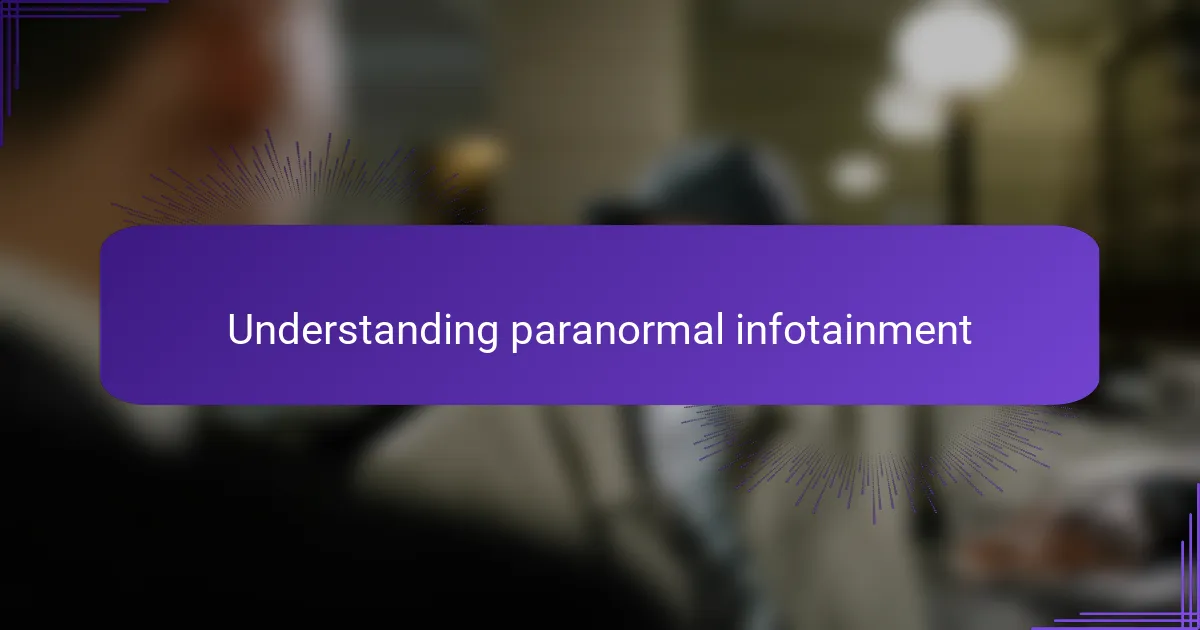
Understanding Paranormal Infotainment
Paranormal infotainment blends the thrill of unexplained phenomena with the storytelling allure of entertainment. I find it fascinating how this genre taps into our deep-seated curiosity about the unknown, making even the most outlandish tales feel oddly compelling. Have you ever caught yourself wondering whether these stories are more than just fiction?
What draws me in, beyond the suspense, is how paranormal infotainment often walks the fine line between fact and fiction. It invites us to question reality while indulging in the excitement of mystery. This delicate balance keeps me hooked, wondering what’s a product of imagination and what might be rooted in something real.
At its core, paranormal infotainment is about connection—connecting us to fears, thrills, and the extraordinary. When I watch or read about these eerie encounters, I’m not just entertained; I’m sharing in a collective experience that challenges our understanding of the world. Doesn’t that shared curiosity make the stories even more powerful?
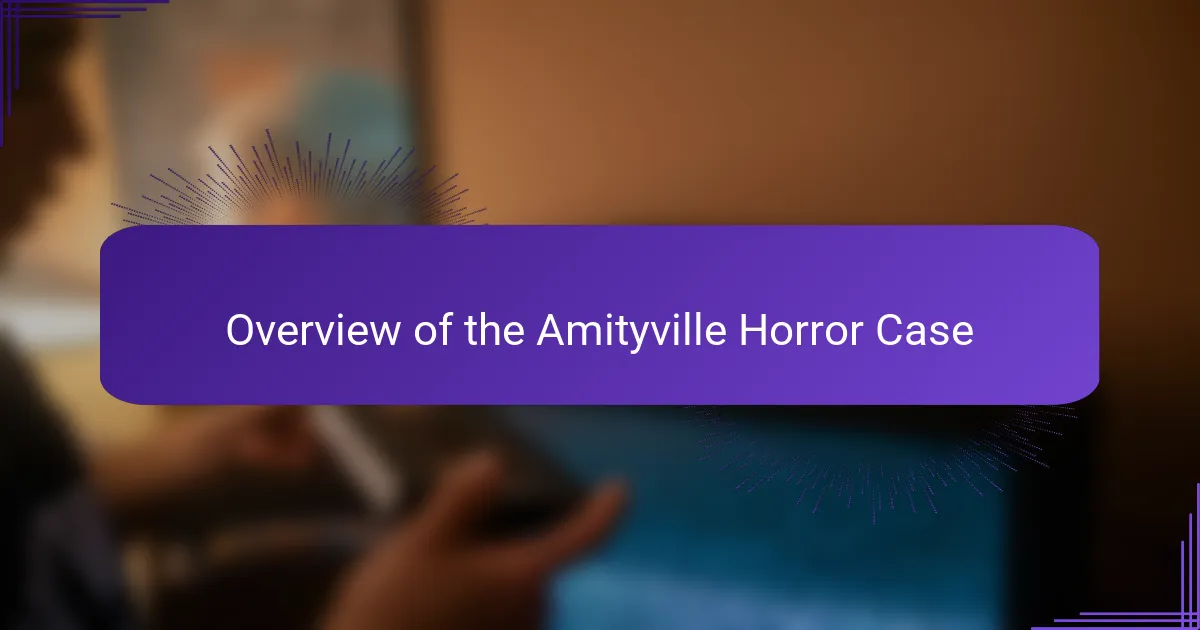
Overview of the Amityville Horror Case
The Amityville Horror case first grabbed my attention because of its intense mix of tragedy and mystery. It started in 1974, when Ronald DeFeo Jr. was convicted of murdering six members of his family in their house on Ocean Avenue. I remember feeling chills just thinking about a crime that brutal happening in an ordinary suburban home.
What made the story even more gripping was what came after—the Lutz family moved into that same house, only to flee 28 days later, claiming they experienced terrifying paranormal events. I often wonder, how much of their account was influenced by fear, and how much was possibly true? Those claims sparked endless debates, documentaries, and books, making the house a symbol of haunted infamy.
For me, the Amityville case isn’t just about a creepy story; it’s also about how people react when faced with the unknown. It’s fascinating how a single location can hold such a powerful narrative that blurs the line between reality and legend. Don’t you think that tension between skepticism and belief is what keeps us coming back to tales like this?
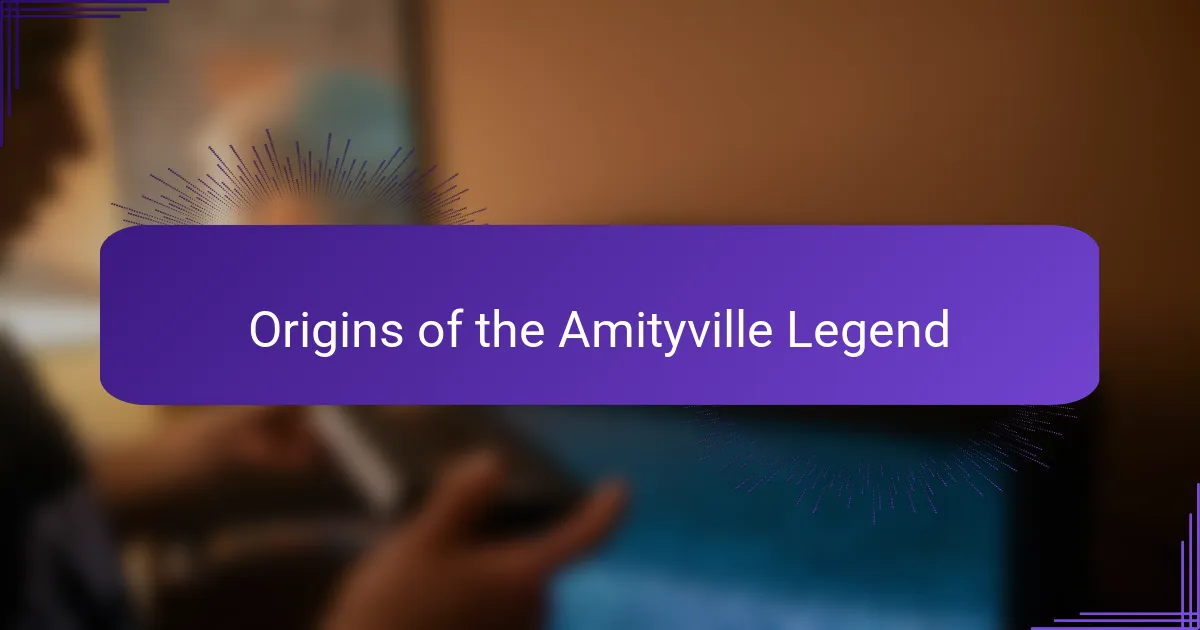
Origins of the Amityville Legend
The origins of the Amityville legend trace back to that grim night in 1974, but what really ignited the story’s fire was the Lutz family’s brief stay in the house the following year. I remember first hearing how they fled after just 28 days, haunted by experiences so intense they reportedly left them terrified and desperate to get out. Isn’t it interesting how a single family’s fear can transform a crime scene into a cultural phenomenon?
What fascinates me is how much the legend grew from the mix of fact and storytelling. Books, movies, and interviews kept feeding the mystery, blurring where reality ended and fiction began. I often ask myself—did the Lutzes feel pressured to embellish the tale, or did the house truly hold something dark beneath its surface?
Looking back, I think the legend’s power comes from how it tapped into our collective fear of the unknown, rooted in a real tragedy but amplified by human imagination. That blend of truth and myth is what makes the origins of Amityville so captivating—and why it still grabs my attention decades later. Have you ever noticed how the scariest stories often start with something painfully real?
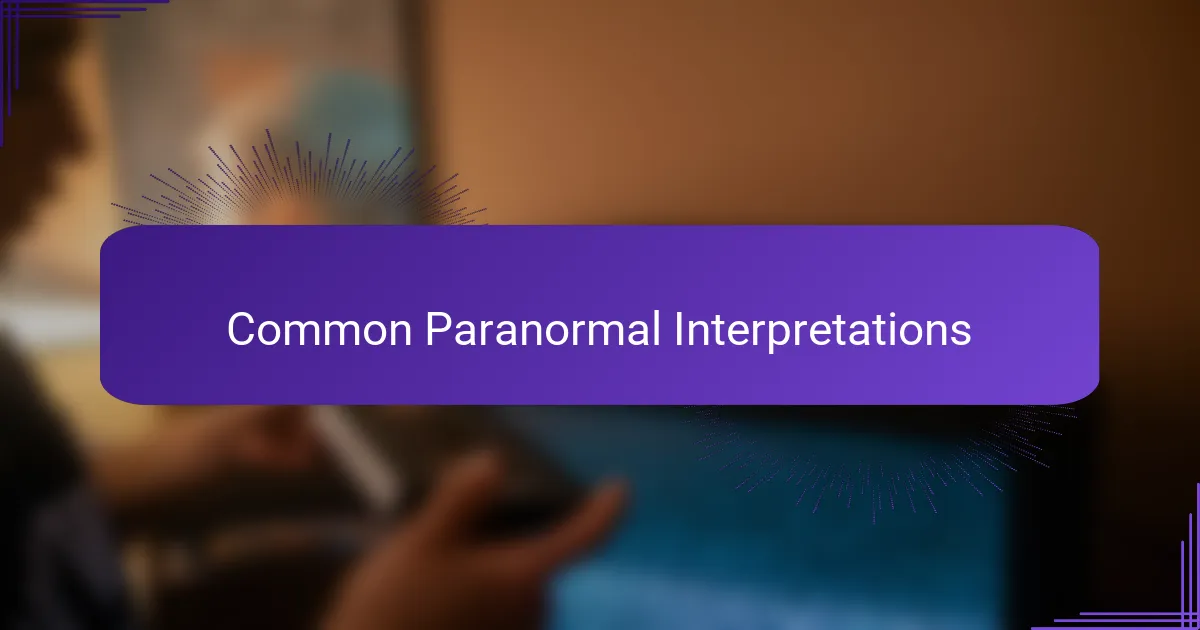
Common Paranormal Interpretations
When I think about the common paranormal interpretations of the Amityville Horror, the idea of malevolent spirits or demons immediately comes to mind. Many believe that the house itself was possessed by dark forces, which seemed to torment the Lutz family relentlessly. Have you ever wondered how a place could carry such an evil imprint that it feels alive in a sinister way?
Another explanation people often discuss is the presence of residual hauntings—like echoes of past trauma replaying endlessly. In this view, the horrifying events are not caused by conscious entities, but by lingering energy trapped within the walls. It makes me think about how environments can hold memories, and whether houses could be more than just buildings, but containers of emotion and fear.
Skeptics, of course, propose psychological interpretations, suggesting that fear and suggestion might trigger hallucinations or mass hysteria. I’ve found these perspectives intriguing because they remind me how powerful our minds are when we’re confronted with stress or tragedy. Isn’t it fascinating to consider that sometimes the haunting might be as much inside us as it is in the world around us?

Analyzing Evidence and Claims
When I look closely at the evidence presented in the Amityville Horror case, I can’t help but notice how much of it leans heavily on anecdotal accounts rather than verifiable facts. The Lutz family’s detailed descriptions of paranormal activity are vivid, yet they come mainly from their personal testimonies, which makes me wonder: how do we separate genuine experiences from heightened emotions or even unconscious embellishment? From my perspective, relying solely on personal claims without solid physical proof always leaves me skeptical.
Then there are the investigations conducted at the house, which often yield ambiguous or conflicting results. Devices that supposedly detect paranormal presence, like EMF meters or spirit boxes, can be influenced by many natural factors. In my experience, these tools are fascinating but far from conclusive—how many times have I seen equipment readings misinterpreted in the heat of a spooky investigation? This makes me think the technological angle in the Amityville story adds more to the drama than to actual evidence.
What strikes me most is how the narrative itself has morphed over time, blending fact and fiction in ways that make it hard to trace the original truth. When I consider the evolution of claims—from initial police reports to later book accounts—I ask myself: are we witnessing a genuine haunting, or is it a story shaped by human creativity and media influence? I find that question endlessly compelling because it reflects the core challenge in analyzing paranormal cases like Amityville—the evidence often invites interpretation more than it provides clear answers.
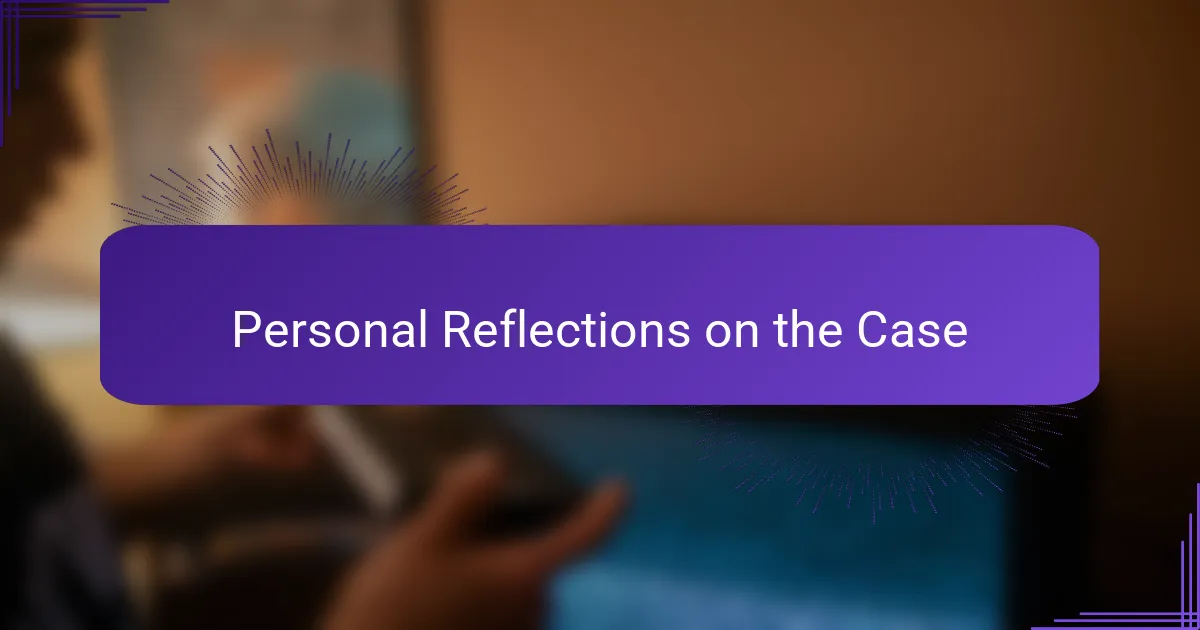
Personal Reflections on the Case
The Amityville Horror case has always left me torn between intrigue and skepticism. On one hand, the raw fear the Lutz family described feels deeply human and believable, almost like you can sense their panic through their words. Yet, I can’t help but question how much of their experience might have been shaped by the weight of the house’s dark history and the media frenzy that followed.
I remember watching interviews where the fear in the family’s eyes seemed genuine, and it made me wonder: if I were in their shoes, would I have interpreted strange noises or shadows the same way? There’s something unsettling about how fear can amplify the unknown, turning ordinary events into something otherworldly. That emotional layer makes the case more than just a story—it becomes a glimpse into how trauma and belief interact.
Ultimately, what fascinates me most is the lasting legacy of Amityville on paranormal folklore and popular culture. It’s a reminder that these tales don’t just entertain us; they tap into something deeper—a collective fascination with the boundaries between reality and the inexplicable. Have you ever noticed how the stories that stick with us often make us question what we thought we knew? For me, Amityville is exactly that kind of tale.
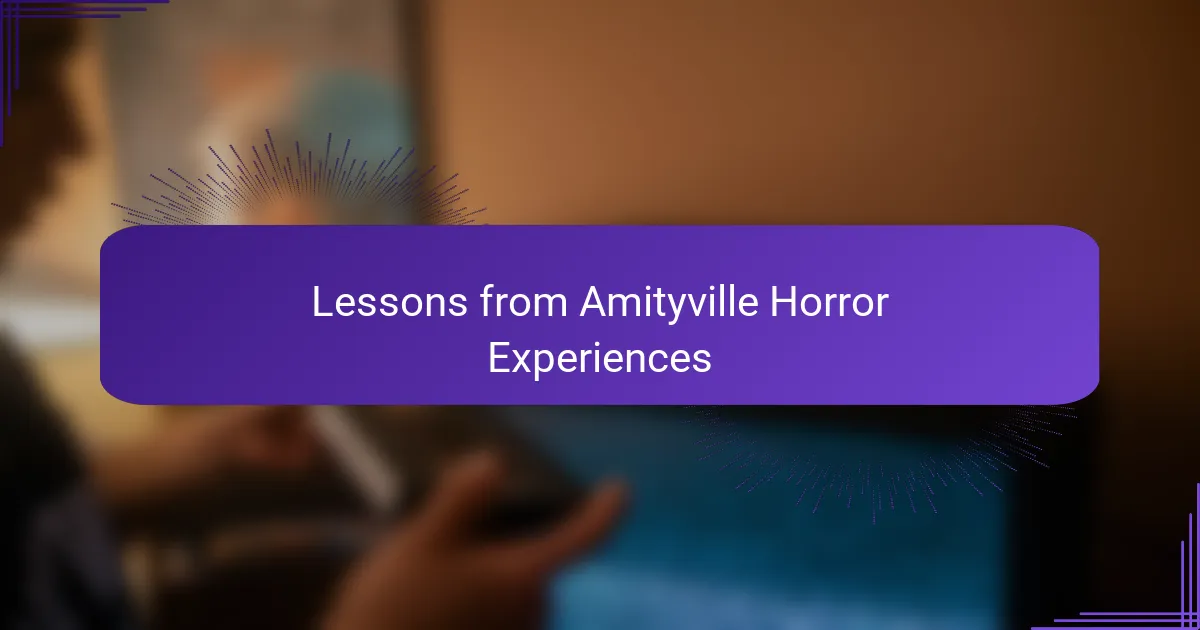
Lessons from Amityville Horror Experiences
One of the biggest lessons I take from the Amityville Horror experiences is how fear itself can become a powerful force, shaping perception and memory. When you’re caught in a situation charged with intense emotions, like the Lutz family was, reality can warp in ways that make the unknown feel even more threatening. Have you ever noticed how your mind tries to fill in gaps with the scariest possibilities when faced with uncertainty?
Another takeaway for me is the importance of questioning stories, even the ones that seem eerily convincing. The Amityville case shows how narratives can grow over time—layered with embellishments, cultural fears, and media influence. It makes me think twice before accepting any paranormal claim at face value. How often might we be witnessing a mix of truth and imagination, rather than pure supernatural events?
Lastly, I’ve learned that these experiences reveal something deeper about human nature: our need to find meaning in tragedy and mystery. The Amityville legend endures not just because of spooky happenings, but because it connects to universal fears and curiosity about the unseen. Isn’t it fascinating how stories like this reflect who we are, as much as what might lie beyond the veil?